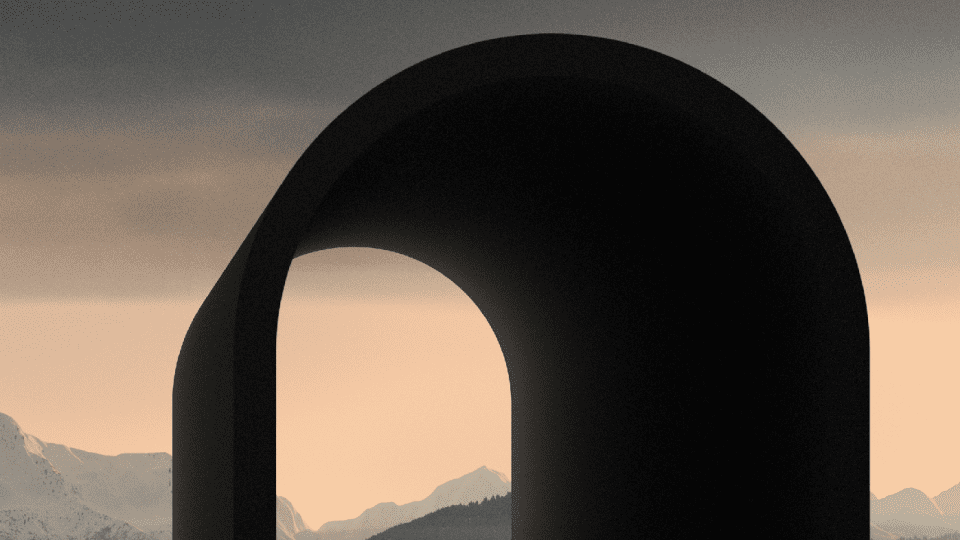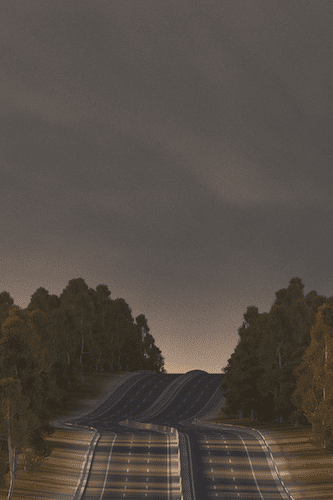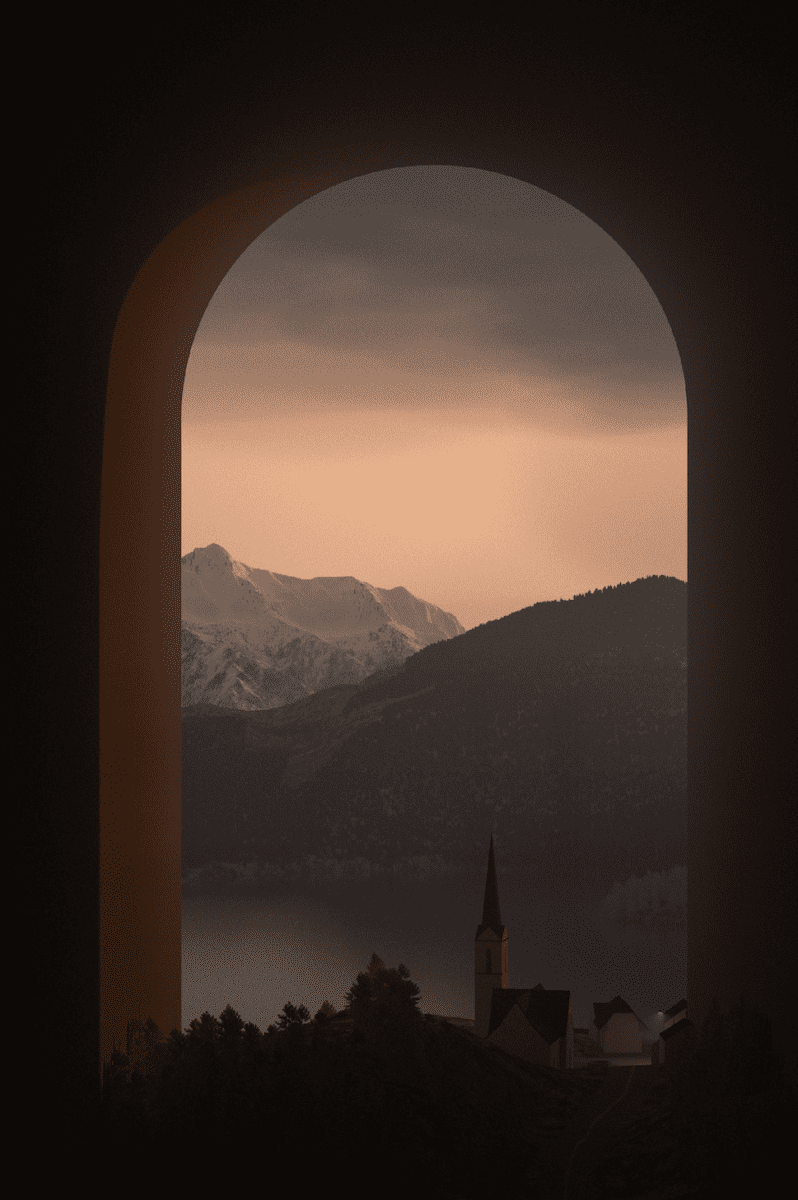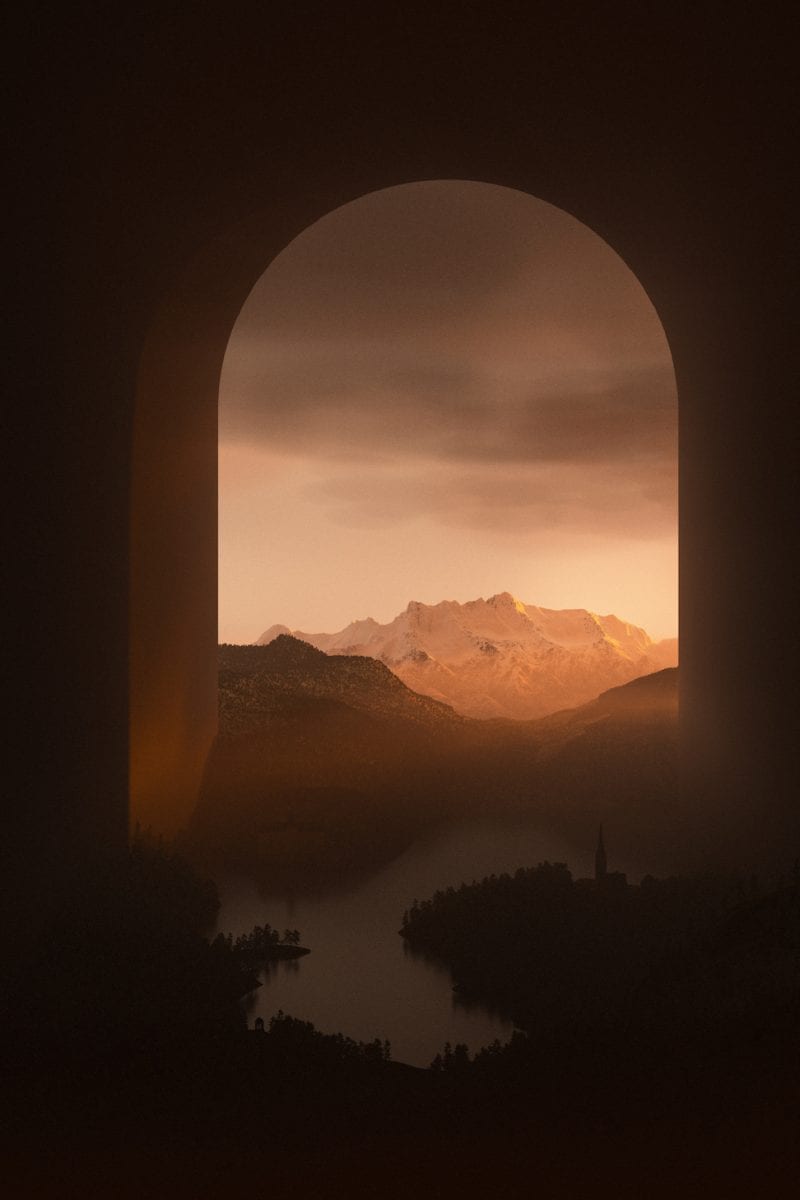Portals have long proliferated the stories we tell each other. From the literary worlds of J.M. Barrie, C.S. Lewis, Lewis Caroll and Neil Gaiman, to the science-fiction cinema ofJJ Abrams and Christopher Nolan, portals offer characters the opportunity to pierce the veil; to rediscover parts of themselves; to visit alternate universes; to move between metaphysical planes as seamlessly as one moment passing into the next. Portals are a way to access long-forgotten places, to rectify chains of events, or, to simply escape.
In light of the pandemic, how have the notion of portals changed in our wider consciousness? To what world do we hope to be enter, or re-enter? Have the doors between our homes and the outside world transformed from wood and metal into something inherently like the fictional portals of our imagination?
On 1 June, Encounter Contemporary, London, opens a virtual solo presentation of Nicolas K. Feldmeyer (b. 1980), featuring surreal time-lapsed films and digitally rendered images that explore just this. Feldmeyer is a Swiss artist who creates pieces that sit on an unstable edge between the familiar and the fictitious, preoccupied with “the process of reconstructing small everyday moments in great detail – the evening sun on a brick courtyard or the trees at the end of the park – familiar scenes that seem to say something very clear.”
On show with Encounter online is the Archway series. Based on three-dimensional models, the works sit somewhere between painting and architecture, examining and redeveloping aspects of Renaissance tradition, whilst imposing structures on mountain-scapes and layering compositions on top of one another as a kind of visual library of ideas. The Estate series features semi-tangible details, such as the netting of a basketball hoop. The corners of the images fade into darkness with a subtle poetry of disorientation – like obscuring the periphery of vision or memory.
Empty Pool is a digital installation that places the viewer “into” the scene. The piece is based on one of Feldmeyer’s earliest memories from childhood. The work explores the process of recollection – gaps and blind spots are as important as that which we can see. Visitors can click around the space, slipping between the worlds of past and present, salvaging the larger picture.
Though many of the works on show were made before the start of the Covid-19 pandemic, they, like many other artworks featuring open-ended landscapes, have been given a new sense of meaning – offering spaces that operate as windows. To this end, one of the Archwaypieces was selected by the Culture Department of the Swiss Embassy to be mailed out as a postcard to 26,000 Swiss Citizens in the UK, in an effort to stay connected. Viewers gaze at a burnt orange sunset, peering out from one side to the next.
Fading Light is available to view online from 1 June. To find out more, click here.
Feldmeyer was longlisted for the Aesthetica Art Prize in 2018.The Aesthetica Art Prize is currently open for entries until 31 August. For more information, click here.
Credits:
1. Nicolas K Feldmeyer, Archway 3, 2020. Giclee print on Hahnemuhele Photorag paper. Courtesy of the artist and Encounter Contemporary.
2. Nicolas K Feldmeyer, Estate 2, 2019. Giclee Print on Hahnemuhle paper. Courtesy of the artist and Encounter Contemporary.
3. Nicolas K Feldmeyer, Estate 4, 2019. Giclee Print on Hahnemuhle paper. Courtesy of the artist and Encounter Contemporary.
4. Nicolas K Feldmeyer, Archway 1, 2020. Giclee print on Hahnemuhele Photorag paper. Courtesy of the artist and Encounter Contemporary.
5. Nicolas K Feldmeyer, Archway 2, 2020. Giclee print on Hahnemuhele Photorag paper.








